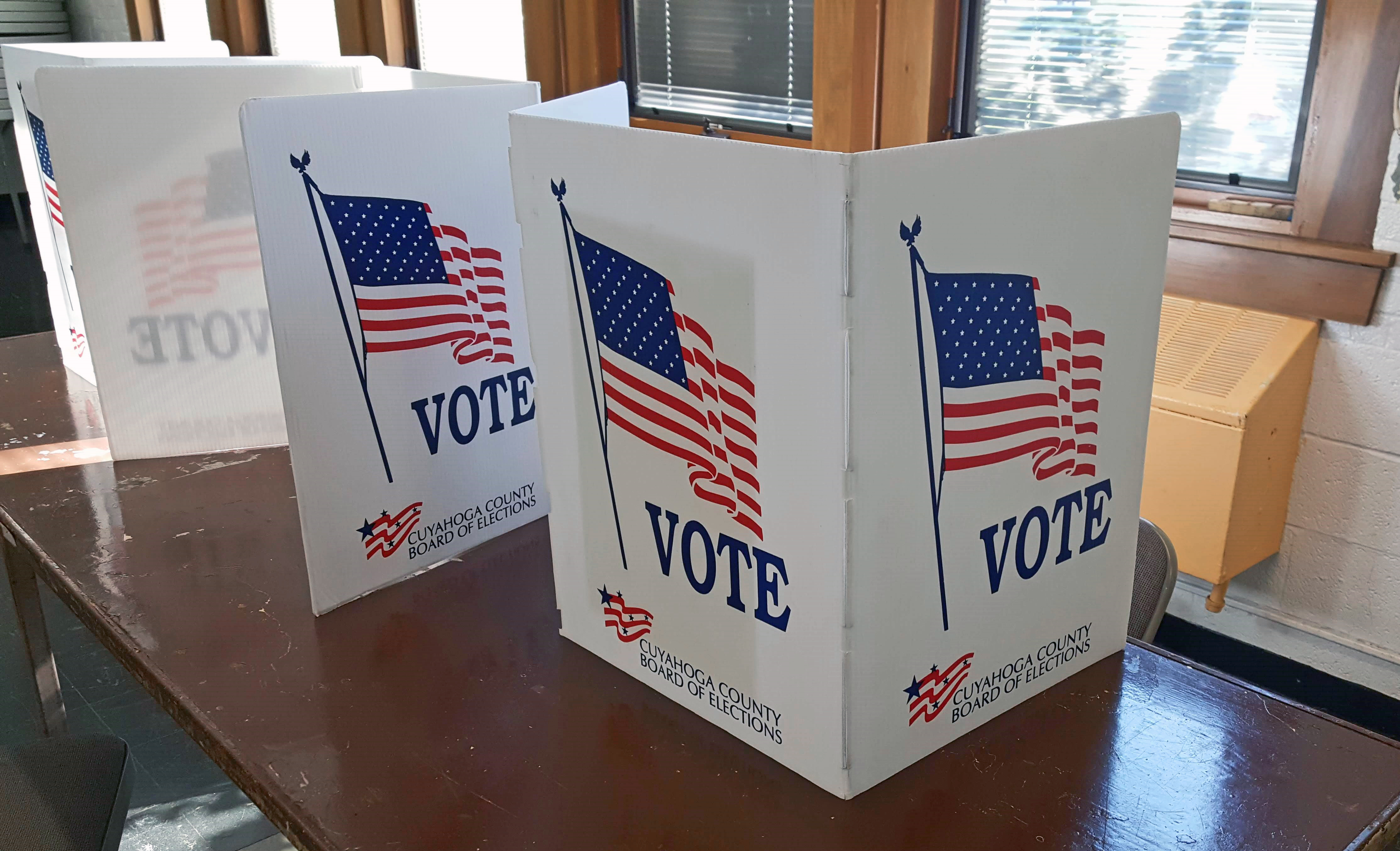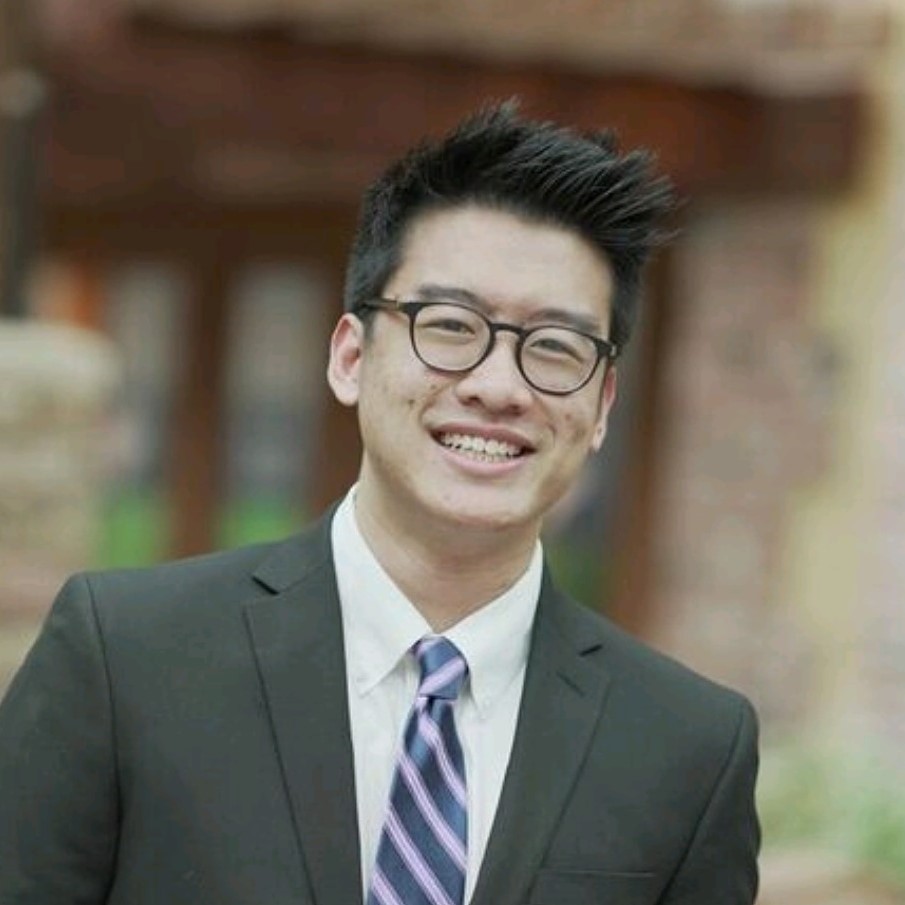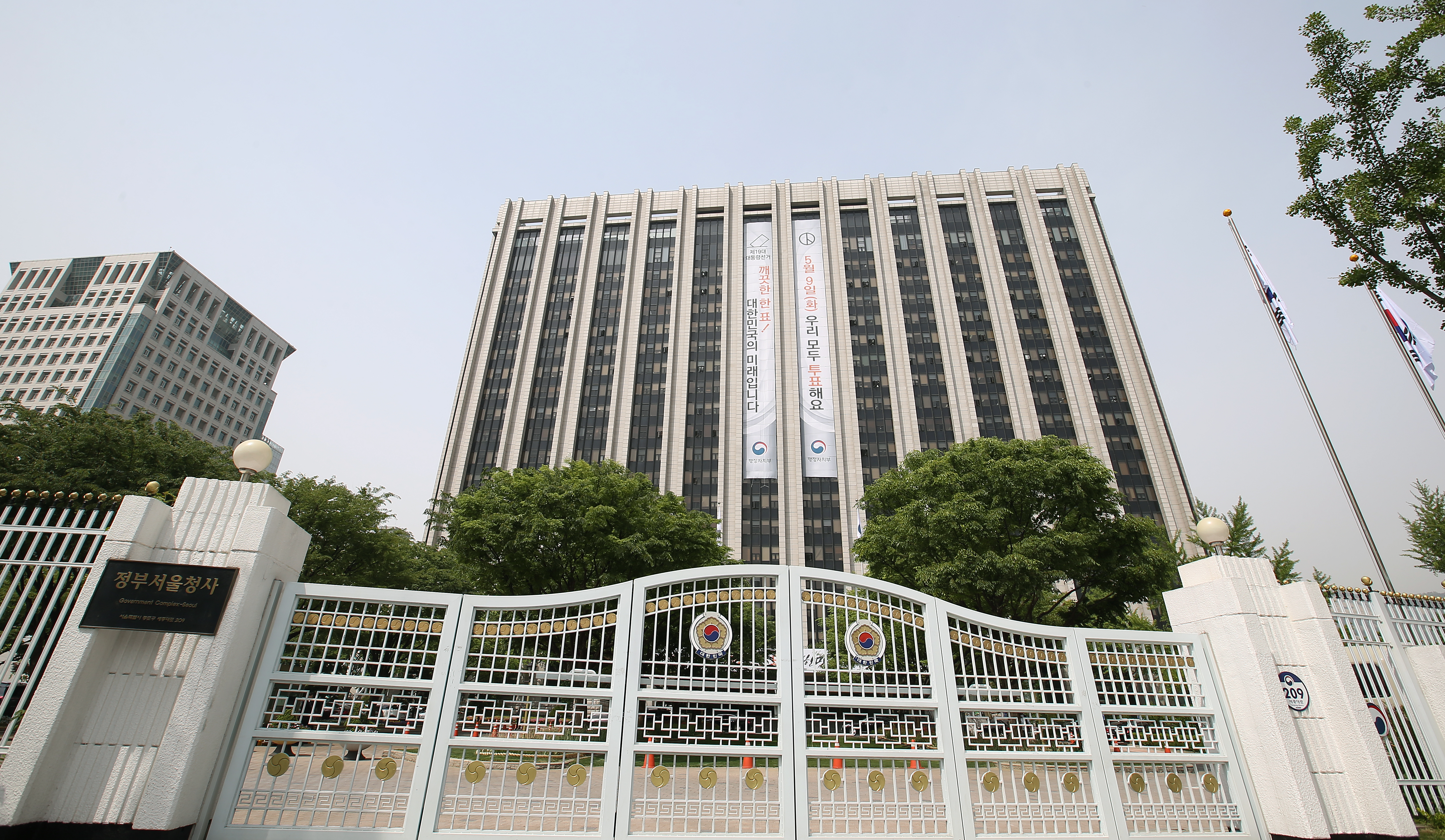Ohio’s 2020 Elections in the Wake of the Coronavirus
If the issues encountered this spring are left unaddressed, Ohio voters may expect similar confusion and delays in November.

Published by The Lawfare Institute
in Cooperation With

Lawfare is partnering with the Stanford-MIT Healthy Elections Project to produce a series on election integrity in the midst of the coronavirus crisis. The Healthy Elections Project aims to assist election officials and the public as the nation confronts the challenges that the coronavirus pandemic poses for election administration. Through student-driven research, tool development, and direct services to jurisdictions, the project focuses on confronting the logistical challenges faced by states as they make rapid transitions to mail balloting and the creation of safe polling places. Read other installments in the series here.
Given Ohio’s 15 years of experience with no-excuse absentee voting, onlookers might have expected the state to adapt with relative ease to the challenge of holding a presidential primary in the midst of a pandemic. Nevertheless, converting the primary to one held predominantly by vote-by-mail on a tight timeline proved difficult. The March 17 primary date was pushed back only a few hours before the polls were set to open, and election officials worked diligently to scale up mail balloting by the new date of April 28. But a time-consuming mail-ballot application process, inconsistent information, mail delays and limited in-person voting led to significant voter confusion. Voter turnout was also lower than in most recent presidential-election years—though that may be due to a noncompetitive presidential field rather than primary conditions.
If the issues encountered this spring are left unaddressed, Ohio voters may expect similar confusion and delays in November. The March primary revealed at least five key challenges that will inform the state’s general election. These include operational burdens in processing mail ballot applications and voter confusion surrounding the application process, the state’s multistep ballot application process requiring up to five passes through the mail, confusion as to the date of the primary, resource constraints, and restrictions on in-person voting.
Our full report on Ohio is available here.
Delaying Ohio’s March 17 Primary Election
Ohio’s primary election was initially set for March 17. At the time, the state had tallied 1,693 confirmed cases of coronavirus infection and two deaths from COVID-19, the respiratory disease caused by the virus, and Republican Gov. Mike DeWine had declared a state of emergency. Once health dangers to voters became apparent, DeWine delayed the primary. However, the delay was finalized only hours before polls were set to open because of disagreements among Ohio officials.
The statutory power to move a primary election in Ohio lies with the state legislature. But by March 16, the legislature had not rescheduled the election. At the request of DeWine, a group of private citizens filed suit on behalf of elderly and immunocompromised voters to delay the primary until June 2. Just after 7:00 p.m. on March 16, Judge Richard Frye rejected their request.
Despite Frye’s ruling, the governor pushed ahead to delay. Shortly after 10:00 p.m. on March 16, DeWine announced that Department of Health Director Amy Acton would issue an order that polls would be closed the next day to avoid “the imminent threat with a high probability of widespread exposure to COVID-19” at polling locations. In response, a candidate for judicial office in Wood County filed a complaint in the state supreme court, alleging the delay of the primary violated Ohio election laws and separation of powers. By 4:00 a.m. on March 17, the Supreme Court of Ohio rejected the challenge, allowing Acton’s order to stand. Some confused voters still showed up at the polls that morning.
Following Acton’s order, Republican Secretary of State Frank LaRose instructed election officials that the primary would be postponed until June 2, though he lacked statutory power to set the date. The Ohio Democratic Party filed suit against LaRose for perceived executive overreach, urging a conclusion to the election before June 2 (later dismissed as moot). Politicians on both sides of the aisle expressed frustration with the postponement.
The relevant branches of the Ohio government initially disagreed over how to conduct a delayed primary. The legislature rejected the proposed June 2 date and likewise rejected LaRose’s proposal to send every eligible voter a ballot. The secretary was also legally unable to send every voter a ballot application, as Ohio’s Senate Bill 205, passed in 2014, prohibited the state from sending unsolicited absentee ballot applications to voters in primary elections. Proposals for expanding vote-by-mail for the primary drew heavy criticism from President Trump and some Ohio Republican Party leaders. Eventually, however, the legislature, governor and secretary of state reached a consensus.
In a bipartisan, unanimous vote, the Ohio legislature extended the primary to April 28 instead of June 2. DeWine signed HB 197 into law on March 27. Under this legislation, Ohio instituted a mail-only primary, with limited exceptions for in-person voting. The voter registration deadline—originally Feb. 18—remained unchanged. Votes cast prior to March 17 would be counted, and absentee voting was extended to April 27. The final date for in-person voting was April 28, limited only to voters with disabilities and those without home mailing addresses.
The legislature rejected LaRose’s compromise proposal of directly mailing postage-paid absentee ballot applications to registered voters but called for every eligible voter to receive a postcard describing how to obtain an absentee ballot application. LaRose sent the postcard with information about absentee voting to more than 8 million registered voters in Ohio. DeWine and LaRose also produced a video promoting vote-by-mail.
Voters could receive an absentee ballot application form online or by calling their county board of elections (BOE) offices, and those without printers could make their own form. Ballot applications had to be submitted by Saturday, April 25, at 12:00 noon
Applying for an absentee ballot required voter effort and resources. Ohio law requires voters to provide acceptable identification on their application, such as an Ohio driver’s license number, the last four digits of their Social Security number or an attached copy of an acceptable form of ID such as a utility bill. Voters had to pay postage to mail applications and ballots, though some counties had drop-off options at their county BOE offices.
Yet county BOE websites presented conflicting information about absentee voting: Many websites indicated that absentee ballot applications were required to be returned by mail and made no mention of alternative methods. Others advertised secure drop boxes available 24/7 at or near their offices. Complete analyses of each county’s procedures are presented in the appendix to the full Healthy Elections report on Ohio.
The governor’s stay-at-home order limited in-person voting: None of the planned precinct polling locations was used, with in-person voting available only at the 88 BOE locations. Initially, only voters with disabilities and voters without a permanent home address (including unhoused individuals) could vote in-person. But on April 17, the secretary of state advised election officials to allow voters who did not receive timely absentee ballots to cast in-person provisional ballots. Therefore, those who requested an absentee ballot but did not receive one in time should have been able to cast a provisional ballot in person at their county BOE offices on the date of the delayed primary, April 28—though, as described below, logistical problems made this difficult for many voters.
By that date, Ohio had counted about 19,300 confirmed coronavirus cases and 1,100 deaths statewide. At the state’s guidance for social distancing (and promise of reimbursement), BOE offices took uniform precautions, such as providing hand sanitizer for voters and masks and gloves for workers, sanitizing voting equipment after each ballot was cast, limiting the number of people allowed in the building at once, and enforcing social distancing guidelines. Some counties went beyond the directions from the state; for example, Cuyahoga County planned to conduct health screenings on people entering the building.
Yet county websites advertised in-person voting options differently. About half of Ohio’s 88 counties did not mention in-person voting on their BOE websites. Very few specified that in-person voting would occur only at the BOE location, and not at precinct locations, and many where-to-vote instructions led voters to their usual precinct. Some county websites indicated no in-person voting would occur at the BOE location (e.g., Greene, Morgan, and Muskingum counties). Voting did in fact occur at each of the 88 county BOE offices. Finally, hardly any BOE websites mentioned provisional in-person voting available for those who applied but did not receive ballots in time. Varied information on county websites indicates that voters were likely receiving conflicting information about when and how to cast their ballots.
Challenges in Transitioning to Vote-by-Mail
Ohio voting rights activists criticized the state government for its failure to make the primary fully accessible. First, they charged, the state instituted its mail-in system only four weeks prior to the primary, short of the typical eight to 10 weeks in primarily vote-by-mail states. Second, the state’s reliance on mail overwhelmed the U.S. Postal Service. LaRose warned that first-class mail was taking as many as seven to nine days to arrive instead of one to three because of limited operational capacities. In the Cleveland area, Postal Service officials estimated that ballots sent out on Saturday, April 25, would not reach voters by Monday, April 27, the day before the election and the deadline to mail ballots.
Voters without transportation and voters who were not fluent in English were especially disadvantaged. Unlike other vote-by-mail states, which have drop boxes and vote centers throughout counties, most Ohio BOE locations had a single drop box outside of the office, inaccessible to voters who lived farther than walking distance and had no car. Canceling in-person voting also meant that voters who were not fluent in English were deprived of translators.
Ohio does not allow voters to apply for an absentee ballot online—an option available in only 14 states and the District of Columbia. As a result, the state had to deal with the issues endemic to conducting a multistep ballot application process through the Postal Service, which required up to five passes through the mail to cast a ballot. Leading up to the election, the secretary of state’s office attempted to make ballot applications more available for voters without access to a printer. In addition to allowing ballot applications to be submitted on a blank piece of paper, LaRose worked with newspapers across the state to print absentee ballot applications. He also announced partnerships with dozens of public and private companies, including the AFL-CIO and Cox Inc., to promote absentee voting, and partnered with the Ohio Grocers Association to make ballot applications available in most member grocery stores. In addition, several advocacy and partisan groups delivered ballot applications—an activity the state encouraged. For example, Cleveland Votes, a voting advocacy group, delivered ballot request forms to voters and placed them in restaurants offering takeout and other locations.
Other groups, such as Ohio’s League of Women Voters, disseminated voter information about the date of the primary and how to receive a ballot, since many voters thought the primary was on June 2 and others thought they would be able to vote in-person. Catherine Turcer of Common Cause Ohio reported that volunteers working with the Ohio Voter Rights Coalition contacted 220,000 voters with information.
Ohio Primary Election Performance
The Ohio 2020 primary election ballot included primaries for president, U.S. Congress, state judiciary and the Ohio general assembly. Although the Democratic primaries in two congressional districts, OH-01 and OH-03, were competitive, the statewide elections were not.
Voter turnout in the primary was lower than in recent presidential-election years, likely due to lack of competition in statewide races. According to the Ohio Secretary of State’s Office, 1.76 million ballots were cast in this primary, which represents 22.65 percent of Ohio’s registered voters. While Ohio turnout was significantly lower in 2020 than in the 2016 primary (in which 43.66 percent of registered voters cast ballots), it was comparable to turnout in 2012, when 1.97 million ballots were cast by 25.52 percent of Ohio’s then-registered voters.
Voters relied heavily on vote-by-mail in the 2020 primary: About 2 million Ohioans requested absentee ballots, a 421 percent increase from absentee turnout in the 2016 primary that overwhelmed county BOE offices. Many counties hired temporary staff and worked 24/7 to process the applications. According to official results, 1.56 million ballots were cast by mail, which made up 85 percent of all ballots cast (most other votes were in-person absentee ballots). By comparison, in Ohio’s 2016 presidential primary, 285,000 absentee ballots were cast by mail—8.6 percent of that year’s turnout.
The last-minute move of the primary date and the rapid shift to vote-by-mail caused problems for voters. Some voters expressed confusion about the date of the primary on social media. Other voters did not receive their ballots in time, requiring them to vote provisionally. The Postal Service warned there was a “strong likelihood” that the 37,000 ballots mailed out on Saturday, April 25, might not arrive by the mail-in deadline of Monday, April 27. Although Ohio’s secretary of state told election officials to let voters who didn’t receive their absentee ballots cast in-person provisional ballots, the limited number of voting locations available on the day of the primary complicated this plan. (Compared to the 88 BOE offices available as polling places in 2020, Ohio had more than 4,000 polling places in the 2016 and 2018 general elections.) In total, 135,223 outstanding absentee ballots mailed to voters were never cast.
Most BOE locations experienced relatively low turnout, aiding efforts to conduct in-person voting in accordance with Centers for Disease Control and Prevention guidelines for social distancing. According to Aaron Ockerman, director of the Ohio Association of Election Officials, the BOE vote centers in Hamilton and Montgomery counties sustained some lines for voters at opening, and Stark County had a small line at some point in the day. Ockerman added that most vote centers were not overwhelmed by in-person voters—only 45,000 ballots were cast in person, as opposed to well over a million in a typical primary.
BOE offices were flooded with thousands of mail ballots on Election Day, causing delayed results across the state. In Franklin County alone, 20,532 mail ballots arrived on April 28—more than double previous days. In Cincinnati, more than 10,000 votes were cast Tuesday at the Hamilton County Board of Elections in-person and by mail, which delayed results until after midnight. While Ohio was able to publish unofficial results on April 29, ballots postmarked on or before April 27 were counted as late as May 8, delaying official results.
What’s more, some ballots arrived after the counting deadline of May 8. On Monday, May 11, the Butler County Board of Elections received 318 ballots from the Postal Service that were postmarked on or before April 27. Significantly, several tax levies in that county were decided by fewer than 300 votes—meaning that the late ballots could have swayed the result.
Counting provisional ballots proved controversial as well. On May 1, LaRose directed BOE offices not to count in-person ballots unless the voter had a disability, lacked a permanent address or properly requested an absentee ballot. In a directive to BOE offices, he ruled, “The provisional ballot is not eligible for counting if the voter was not eligible to vote in-person absentee under H.B. 197 and the voter did not apply for an absentee ballot by noon on April 25, 2020.” LaRose’s decision to “throw out votes” led three Democratic lawmakers to suggest that lawsuits could follow. Originally, reporting suggested that 44,000 provisional ballots were cast during the primary. Official results show 24,788 provisional ballots cast in-person were counted, while 10,160 ballots were rejected.
Next Steps
After the primary, support for expanding vote-by-mail increased among both parties in the legislature. Republican House Speaker Larry Householder joined Democrats and voting rights advocates in saying preparations were needed in case the coronavirus derailed a traditional in-person general election. DeWine and Senate President Larry Obhof expressed the intention to wait for more information before deviating from an in-person election.
LaRose, meanwhile, proposed several changes to prepare for a future election conducted mostly by mail, because “it should never be that difficult again.” LaRose’s proposals include allowing online ballot requests, sending postage-paid ballot request forms directly to voters, increasing the timeline for ballot delivery and enhancing election infrastructure for in-person voting. LaRose criticized the extra steps required for voters to apply for a ballot: “It just does not meet expectations in the year 2020 to require people to print a form and to put a wet ink signature on a dead tree piece of paper to fold it up, root through their junk drawer to find a stamp and mail it to their board of elections ….. That is from the last century and needs to be replaced with a modern, online absentee request system.”
Ohio Democrats would go further than LaRose’s proposals. On April 29, Democratic State Reps. Michele Lepore-Hagan and Beth Liston called for action on their bill for universal vote-by-mail, HB 560, which was co-sponsored by 16 other Democrats and is still pending committee approval. The bill would forgo ballot applications and require ballots to be mailed to all registered voters with prepaid return postage.
Meanwhile, on June 4, House Bill 680 passed the Ohio House. This bill, authored by Republican Rep. Cindy Abrams, aims to safeguard future elections and increase ballot access. However, it proposes changes to Ohio law that may cause longer lines on Election Day, according to LaRose spokeswoman Maggie Sheehan and the Ohio Association of Elections Officials. These changes include shortening the time frame to apply for absentee ballots by mail, eliminating the secretary of state’s ability to prepay return postage for ballot applications and ending in-person early voting three days before the election. It would make this year’s presidential election the first since 2008 in which ballot applications would not be mailed to all registered voters. The bill awaits action from the Ohio Senate.
In response to House Bill 680, Democratic Reps. Paula Hicks-Hudson (D) and Bride Rose Sweeney introduced House Bill 687 on June 1. This bill aims to expand voting access by mailing a postage-paid ballot to every voter (eliminating the application step), counting ballots postmarked by Election Day, protecting safe and accessible in-person voting opportunities, and increasing voter registration access. Unlike HB 680, it maintains the last three days of early voting and the mailing of applications to all voters. The bill is pending in committee.
The Brennan Center has advised that Ohio needs much greater funding: ideally, a total of $70 million to $82.2 million to run safe elections in 2020. The federal grant in the CARES Act provided only $12.8 million, on top of a $7 million grant from the state legislature for costs of extending the primary. Regardless of the solution, Ohio will need to bolster its election resources in order to provide adequate support for county BOE offices and ensure all voters can cast ballots in time.
In early July, LaRose issued a “Ready for November” directive on how the $12.8 million in federal funds would be spent. Under the directive, 87 percent of Ohio’s federal dollars will be sent directly to the county BOE offices, which are to use federal funds for poll worker recruitment, election infrastructure and personal protective equipment. LaRose intends to mail absentee ballot applications to all of the state’s 8 million registered voters and has instructed BOE offices to email or call voters who have not provided necessary information on absentee ballots.
BOE offices across Ohio are concerned about low numbers of poll workers in November. It takes 35,000 poll workers in Ohio to run a normal election—but because many poll workers tend to be older and therefore at risk for COVID-19, the coronavirus could leave many BOE offices shorthanded on Election Day. In an effort to recruit more poll workers, Hamilton County has asked businesses to allow employees a paid day off on Election Day if they work the polls.
Election Challenges
As the above analysis shows, five key challenges from Ohio’s primary will inform November’s elections:
- Confusion and operational burdens regarding mail ballot applications: Ohio law prohibits sending ballots or ballot applications directly to voters in a primary. Voters had to apply to vote absentee, which created confusion and significant operational burdens for election officials.
- Multiple trips through the mail: Ohio conducted a multistep ballot application process through the U.S. Postal Service, involving up to five passes through the mail. This system, coupled with Postal Service delays, meant some voters did not receive their ballots in time to vote.
- Confusion as to the date of the primary: Many voters thought the primary was delayed until June 2, as originally announced, and not April 28, per the bill passed by the Ohio General Assembly.
- Resource constraints: Limited resources and staff at the county board of elections offices led to delays in sending and counting ballots.
- Limited in-person voting: Only 88 locations statewide allowed in-person voting, and only for specific groups of people. Ballots of Ohioans who showed up to vote in-person but had not applied for a ballot were discarded.
If these issues encountered this spring are left unaddressed, Ohio voters may experience similar confusion and delays in the November general election. The Ohio primary illustrates potential turnout and administrative costs of a multistep mail balloting system with limited in-person voting.









